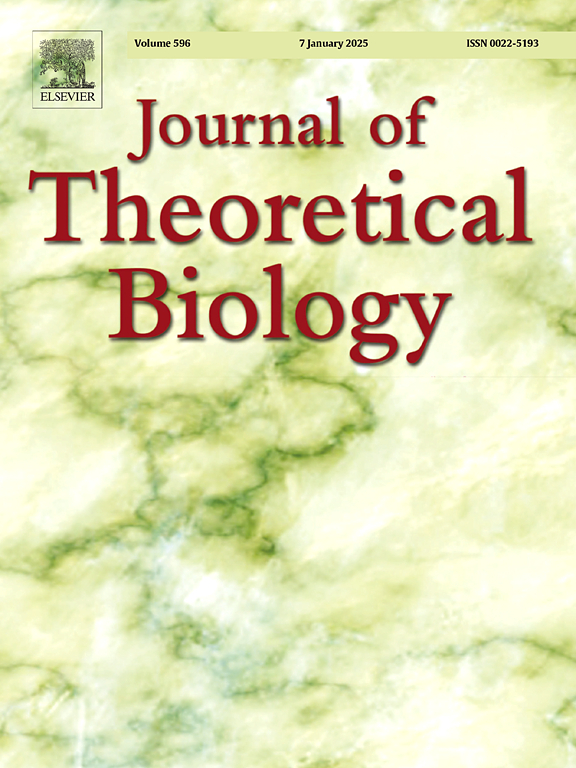Modeling cell differentiation in neuroblastoma: Insights into development, malignancy, and treatment relapse
IF 2
4区 数学
Q2 BIOLOGY
引用次数: 0
Abstract
Neuroblastoma is a paediatric extracranial solid cancer that arises from the developing sympathetic nervous system and is characterised by an abnormal distribution of cell types in tumours compared to healthy infant tissues. In this paper, we propose a new mathematical model of cell differentiation during sympathoadrenal development. By performing Bayesian inference of the model parameters using clinical data from patient samples, we show that the model successfully accounts for the observed differences in cell type heterogeneity among healthy adrenal tissues and four common types of neuroblastomas. Using a phenotypically structured model, we show that alterations in healthy differentiation dynamics are related to cell malignancy, and tumour volume growth. We use this model to analyse the evolution of malignant traits in a tumour. Our findings suggest that normal development dynamics make the embryonic sympathetic nervous system more robust to perturbations and accumulation of malignancies, and that the diversity of differentiation dynamics found in the neuroblastoma subtypes lead to unique risk profiles for neuroblastoma relapse after treatment.
神经母细胞瘤的细胞分化模型:对发展、恶性和治疗复发的见解。
神经母细胞瘤是一种儿童颅外实体癌,起源于发育中的交感神经系统,其特征是肿瘤中细胞类型的异常分布与健康婴儿组织相比。本文提出了一种新的交感肾上腺发育过程中细胞分化的数学模型。通过使用患者样本的临床数据对模型参数进行贝叶斯推断,我们表明该模型成功地解释了健康肾上腺组织和四种常见神经母细胞瘤之间观察到的细胞类型异质性差异。使用表型结构模型,我们表明健康分化动力学的改变与细胞恶性肿瘤和肿瘤体积生长有关。我们用这个模型来分析肿瘤中恶性性状的演变。我们的研究结果表明,正常的发育动态使胚胎交感神经系统对恶性肿瘤的扰动和积累更加强健,并且在神经母细胞瘤亚型中发现的分化动态的多样性导致治疗后神经母细胞瘤复发的独特风险谱。
本文章由计算机程序翻译,如有差异,请以英文原文为准。
求助全文
约1分钟内获得全文
求助全文
来源期刊
CiteScore
4.20
自引率
5.00%
发文量
218
审稿时长
51 days
期刊介绍:
The Journal of Theoretical Biology is the leading forum for theoretical perspectives that give insight into biological processes. It covers a very wide range of topics and is of interest to biologists in many areas of research, including:
• Brain and Neuroscience
• Cancer Growth and Treatment
• Cell Biology
• Developmental Biology
• Ecology
• Evolution
• Immunology,
• Infectious and non-infectious Diseases,
• Mathematical, Computational, Biophysical and Statistical Modeling
• Microbiology, Molecular Biology, and Biochemistry
• Networks and Complex Systems
• Physiology
• Pharmacodynamics
• Animal Behavior and Game Theory
Acceptable papers are those that bear significant importance on the biology per se being presented, and not on the mathematical analysis. Papers that include some data or experimental material bearing on theory will be considered, including those that contain comparative study, statistical data analysis, mathematical proof, computer simulations, experiments, field observations, or even philosophical arguments, which are all methods to support or reject theoretical ideas. However, there should be a concerted effort to make papers intelligible to biologists in the chosen field.

 求助内容:
求助内容: 应助结果提醒方式:
应助结果提醒方式:


